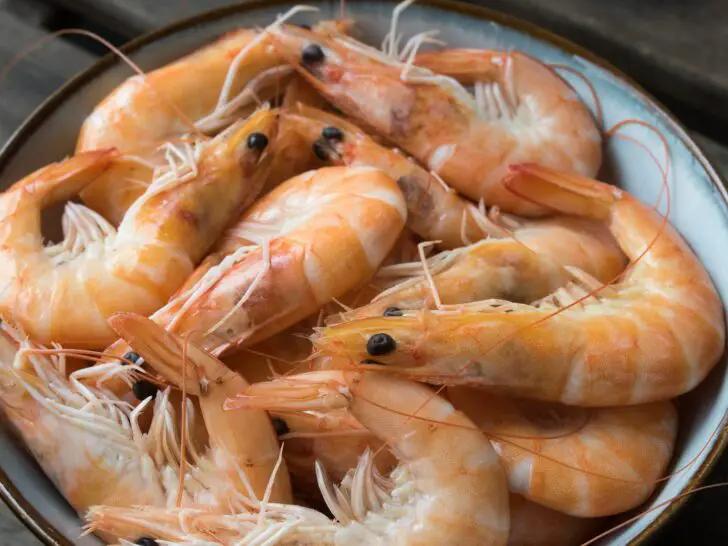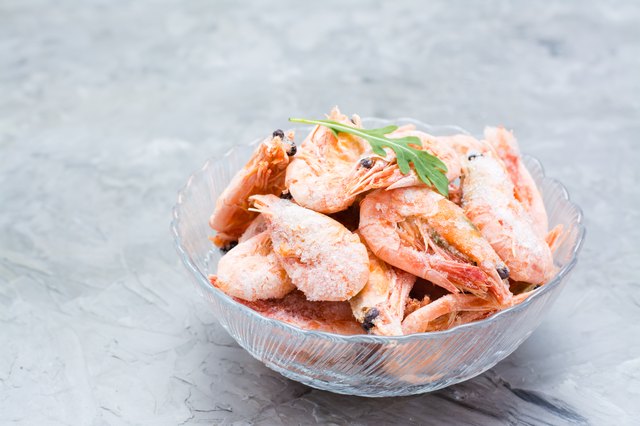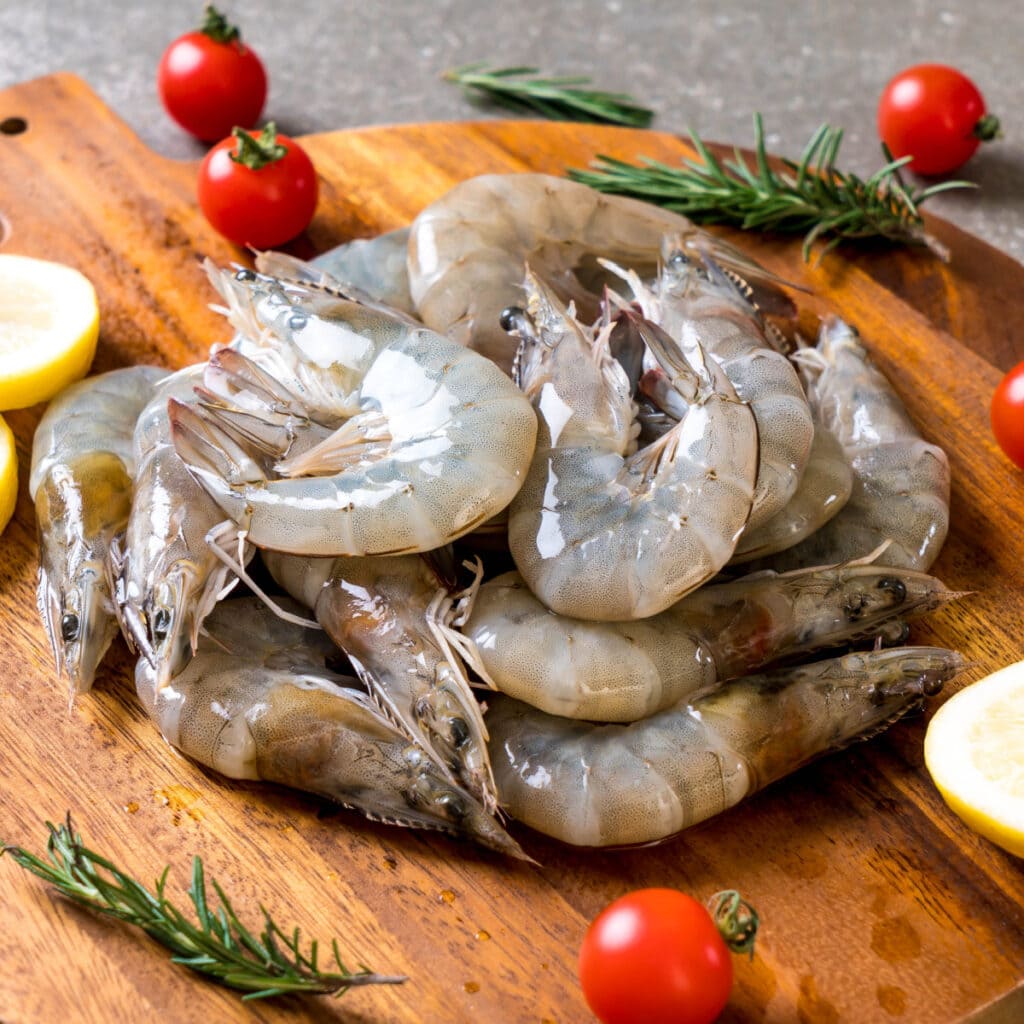Visual Inspection

Visual Inspection is one of the primary methods to determine if shrimp has gone bad. By visually examining the cooked shrimp, you can look for any visible signs of spoilage. Pay close attention to the color, texture, and sliminess of the shrimp. If you notice any discoloration, such as gray or yellowish patches, it is a clear indication of spoilage. Additionally, if the shrimp appears excessively slimy or has the presence of mold, it should be discarded immediately. Visual cues are an important tool in detecting the freshness and quality of shrimp.
Visual Signs Of Bad Shrimp
When it comes to detecting spoilage in shrimp, visual signs play a crucial role. By closely examining the shrimp, you can spot visual cues that indicate whether it has gone bad. Look for any discoloration, such as gray or yellow patches, which are clear indicators of spoilage. Additionally, if the shrimp appears excessively slimy or has the presence of mold, it should be discarded immediately. These visual abnormalities signal that the shrimp is no longer fresh and should not be consumed. Trust your eyes to ensure the quality and freshness of your shrimp.
How Color, Texture, And Sliminess Indicate Spoilage
Color, texture, and sliminess are important visual cues when it comes to detecting spoilage in shrimp. Fresh shrimp should have a vibrant color, ranging from a light grayish-white to a pinkish hue. Any discoloration, such as patches of gray or yellow, can indicate that the shrimp is no longer fresh. In terms of texture, fresh shrimp should be firm, springy, and slightly elastic. If the shrimp feels excessively slimy or mushy to the touch, it is a clear sign of spoilage. Trusting your eyes and senses will help ensure that you only consume fresh and high-quality shrimp.
Smell Test

The smell test is a simple yet effective way to determine if shrimp has gone bad. When inspecting the shrimp, take a whiff and trust your senses. Fresh shrimp should have a mild, slightly salty or oceanic aroma. However, if the shrimp gives off a strong, unpleasant smell, it is a sign of spoilage. This smell is often described as ammonia-like or fishy. If the shrimp smells off or foul, it is best to discard it as it may be unsafe to consume. Trusting your nose is key in detecting spoiled shrimp and avoiding any potential illness.
Identifying Spoiled Shrimp By Smell
When it comes to identifying spoiled shrimp, the sense of smell becomes a crucial tool. Fresh shrimp should have a mild, slightly salty or oceanic aroma. However, if you detect a strong, unpleasant smell such as ammonia or a fishy odor, it is a clear indication of spoilage. Trusting your nose is key in detecting spoiled shrimp and avoiding any potential illness. If the shrimp smells off or foul, it is best to discard it immediately to ensure your safety. Remember, when it comes to shrimp, it’s always better to be safe than sorry.
Recognizing Ammonia Or Fishy Odors In Shrimp
Recognizing ammonia or fishy smells in shrimp is a key indicator of spoilage. Fresh shrimp should have a mild, slightly salty or oceanic aroma. However, if you detect a strong, unpleasant smell, such as ammonia or a fishy odor, it is a clear sign that the shrimp has gone bad. Trust your nose and discard any shrimp that smells off or foul, as consuming spoiled shrimp can lead to foodborne illnesses. It’s important to prioritize your safety and always opt for fresh, good-smelling shrimp when cooking or consuming this delicious seafood.
Touch Examination

To further determine the freshness of shrimp, a touch examination can be conducted. Fresh shrimp should have a firm texture and should not feel slimy or mushy to the touch. If the shrimp feels slimy or mushy, it is a clear indication that it has spoiled and should not be consumed. The texture changes occur due to bacterial growth or decomposition processes. By feeling the texture of the shrimp, one can easily detect any abnormalities and avoid consuming spoiled shrimp. Trusting your sense of touch is crucial in ensuring the quality and safety of the seafood you are about to eat.
Texture Changes In Bad Shrimp
When shrimp goes bad, its texture undergoes noticeable changes. Fresh shrimp should have a firm and slightly elastic texture. However, if the shrimp feels soft or mushy to the touch, it is a clear indication that it has spoiled. The texture changes occur due to bacterial growth or decomposition processes. Another texture change to watch out for is sliminess or a slippery texture on the surface of the shrimp. These abnormalities in texture should be a cause for concern and the shrimp should not be consumed. Trusting your sense of touch is vital in ensuring the quality and safety of the seafood you intend to eat.
Detecting Mushiness Or Sliminess Through Touch
In order to determine if shrimp has spoiled, one can rely on their sense of touch. When examining shrimp, it should have a firm and slightly springy texture. However, if the shrimp feels mushy or slimy to the touch, it is a clear indication of spoilage. The texture changes occur due to bacterial growth or decomposition processes. Trusting one’s sense of touch is crucial in ensuring the quality and safety of the seafood being consumed. If the shrimp feels mushy or slimy, it is best to discard it and not consume it.
Expiration Date And Storage

When it comes to determining the freshness of shrimp, paying attention to the expiration date is essential. The expiration date indicates the recommended timeline for consuming the shrimp before it starts to spoil. It is important to check the packaging for the expiration date and consume the shrimp before that date passes. Proper storage is also crucial in maintaining the quality of shrimp. To prevent spoilage, store raw shrimp in the refrigerator at temperatures below 40°F and consume it within one to two days of purchase. Freezing shrimp is an alternative option, but it should be consumed within three to six months for optimal taste and quality. Proper storage practices help to prolong the shelf life of shrimp and ensure its freshness when consumed.
Understanding Expiration Dates On Shrimp Packaging
To ensure the freshness and quality of shrimp, it is crucial to understand the expiration dates on the packaging. The expiration date indicates the recommended timeline for consuming the shrimp before it starts to spoil. It is important to check the packaging for this date and consume the shrimp before it passes. By following the guidelines, you can avoid consuming shrimp that may have deteriorated in taste, texture, or safety. Remember, consuming shrimp past its expiration date may increase the risk of foodborne illness. Always prioritize fresh and properly stored shrimp to enjoy a delicious and safe meal.
Proper Storage Methods To Prevent Shrimp Spoilage
To prevent shrimp spoilage, it is important to store them properly. After purchasing, it is recommended to keep raw shrimp in the refrigerator at a temperature below 40°F (4°C) to inhibit bacterial growth. Ideally, it should be consumed within one to two days. If you plan to store them for a longer period, freezing is the best option. Place the shrimp in a sealed container or freezer bag, removing as much air as possible, and store them in the freezer at 0°F (-18°C) or below. Proper storage techniques will help maintain the freshness and quality of shrimp for a longer period.
Cooking And Taste Evaluation

When it comes to evaluating the quality of cooked shrimp, taste and flavor are crucial indicators. If the shrimp tastes different than usual, has a spoiled or off taste, it is a clear indication of spoilage. The texture may also change, becoming mushy or slimy. Cooking methods can further help identify spoiled shrimp, as cooking seafood generally intensifies its smell. If the cooked shrimp emits a strong and unpleasant odor during or after cooking, it is best to discard it. Trusting your senses and being aware of any changes in taste or texture will help ensure that you’re consuming fresh and safe shrimp.
Changes In Taste And Flavor Of Spoiled Shrimp
Spoiled shrimp will have noticeable changes in taste and flavor. The usual delicious and fresh taste of shrimp will be replaced by an off or spoiled taste. It may taste different than what you are accustomed to, indicating that it is no longer safe to consume. Additionally, the flavor may be unpleasant or even rancid. Trusting your taste buds and being aware of any negative changes in the taste and flavor of cooked shrimp will help you identify and avoid consuming spoiled seafood.
Cooking Methods To Identify Spoiled Shrimp
One of the cooking methods to identify spoiled shrimp is to pay attention to the changes in its appearance during the cooking process. If the shrimp starts to turn an opaque color or has a slimy texture, it is an indication that it has gone bad. Additionally, if the shrimp emits a strong and unpleasant odor while cooking, it is best to discard it. By observing these changes in appearance, texture, and smell while cooking shrimp, you can easily determine if it is spoiled and avoid consuming it to prevent any health risks.
Conclusion

In conclusion, it is crucial to effectively assess the freshness and quality of shrimp to avoid consuming spoiled seafood. Visual inspection, smell tests, touch examination, and proper storage methods are all important in detecting shrimp spoilage. By paying attention to changes in color, texture, and smell, individuals can confidently determine if the shrimp is bad and should be discarded. Additionally, understanding expiration dates and maintaining proper storage conditions can further prevent the development of harmful bacteria. By prioritizing these practices, individuals can ensure the safety and enjoyment of their shrimp dishes.
Summary Of Methods To Detect Spoiled Shrimp
In summary, there are several methods to detect spoiled shrimp. Visual inspection involves looking for signs of discoloration, sliminess, or changes in texture. The smell test can help identify ammonia or fishy odors, indicating spoilage. Touch examination involves checking for mushiness or excess sliminess. Understanding expiration dates and proper storage methods are important in preventing shrimp spoilage. Finally, cooking and taste evaluation can reveal changes in flavor or texture. By employing these methods, individuals can effectively determine if shrimp is bad and avoid consuming spoiled seafood.
Tips For Ensuring Shrimp Freshness And Quality
To ensure shrimp freshness and quality, follow these tips. First, buy shrimp from reputable sources that maintain proper handling and storage practices. Look for shrimp that is sold on ice or refrigerated to maintain its cold temperature. Check for a fresh, briny scent, indicating that the shrimp is still in good condition. Properly store shrimp in the refrigerator at a temperature below 40°F to slow down bacterial growth. Avoid storing shrimp for too long and use it within two days of purchase. Lastly, properly cook shrimp to eliminate any potential bacterial contamination and enjoy it safely.
FAQ About How To Tell If Shrimp Is Bad: Detecting Spoilage
Q: How can I tell if shrimp has gone bad?
A: You can check for signs of spoilage by looking for a fishy or ammonia-like smell, slimy texture, off coloration, or the presence of mold.
Q: What does spoiled shrimp smell like?
A: Spoiled shrimp typically has a strong fishy or ammonia-like odor. If you detect this smell, it’s best to discard the shrimp to avoid foodborne illness.
Q: Can I eat shrimp if it has a slightly off smell?
A: It is not recommended to consume shrimp that has an off or strong odor. Trust your senses and discard shrimp that smells fishy or unpleasant.
Q: Are there visual cues to identify spoiled shrimp?
A: Yes, spoiled shrimp may appear slimy, discolored, or have visible signs of mold growth. Avoid eating shrimp that show any of these visual indicators of spoilage.
Q: How long can shrimp stay fresh in the refrigerator?
A: Generally, fresh shrimp can be stored in the refrigerator for up to 2 days. It’s crucial to follow proper storage guidelines to maintain its freshness and quality.
Q: What is the best way to store shrimp to prevent spoilage?
A: Keep shrimp in an airtight container or sealed plastic bag in the coldest part of the refrigerator. Make sure to consume or freeze the shrimp within a couple of days of purchase for the best taste and quality.

Panda Cafe offers delicious dining and takeout to Fairfax, VA.
Panda Cafe is a cornerstone in the Fairfax community and has been recognized for its outstanding Chinese cuisine, excellent service, and friendly staff.